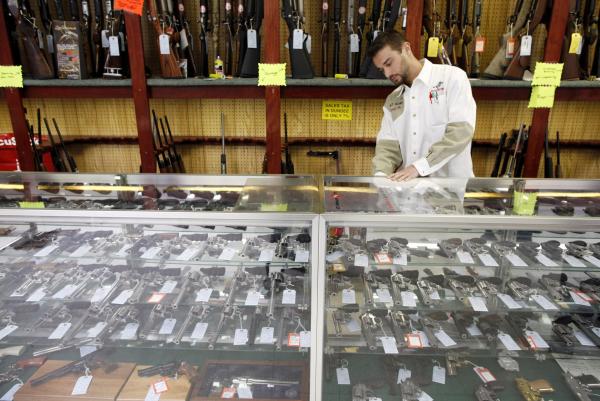
CAMBRIDGE, Mass., Sept. 19 (UPI) — Of the roughly 265 million firearms owned by Americans, exactly half of that arsenal is owned by just 3 percent of the adult population, according to an extensive new survey conducted at two prominent U.S. universities.
The research, performed last year by public health researchers at Harvard and Northeastern universities, says the rising popularity of gun ownership in the United States is being pushed by that extremely small part of the population — a niche the report calls “super owners.”
The average “super owner,” the survey says, owns 17 firearms — even though crime statistics don’t support their main reason for owning a gun.
“The desire to own a gun for protection — there’s a disconnect between that and the decreasing rates of lethal violence in this country. It isn’t a response to actuarial reality,” researcher Matthew Miller said.
“When I look at our survey, what I see is a population that is living in fear,” lead author Dr. Deborah Azrael said. “They are buying handguns to protect themselves against bad guys, they store their guns ready-to-use because of bad guys, and they believe that their guns make them safer.”
The bottom line, according to researchers, is that a tiny part of the U.S. population, just 7.7 million people, own 133 million of the 265 million firearms currently in circulation — precisely 50 percent. The survey found these “super owners” have between eight and 140 firearms.
“It’s a fundamental building block for gun research,” Duke University researcher Philip Cook, who conducted similar research in the mid-1990s, said of the new report. “And in a variety of ways, having this baseline information is going to inform research and policy development. It’s essential that we have accurate and up-to-date information.”
Advance copies of the new report were given to Britain’s The Guardian and The Trace. Researchers will release the report soon.
Since 1994, 70 million additional firearms entered private ownership in the United States, the report says. During that same span, the percentage of American gun owners fell from 25 to 22 percent — further exemplifying the conclusion that more guns are going into fewer hands.
Another observation the survey makes is that a higher percentage of women, and a lower rate of men, own at least one firearm today than they did at the time of the last substantial gun study in 1994. For women, that percentage rose from 9 percent to 12 percent. For men, it dropped from 42 percent to 32 percent.
Recent statistics show that about 100,000 Americans are injured every year by a firearm — and 30,000 are killed. Of the 30,000 killed, about 20,000 are suicides.
While the new report makes a number of solid conclusions, one thing it doesn’t ascertain is whether “super owners” potentially face a greater risk of harm, or safety, than their less-equipped counterparts.
“We know almost nothing about that,” Azrael said.





